Thassa God of the Sea helps us to understand devotion mechanic and a keyword action named Scry.
The gods had a habit of going round to atheists’ houses and smashing their windows
The Colour of Magic by Terry Pratchett
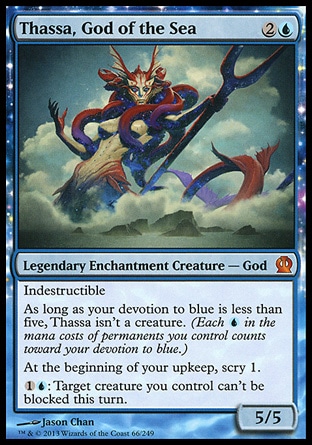
Oracle Text:
Legendary Enchantment Creature — God
Indestructible
As long as your devotion to blue is less than five, Thassa isn’t a creature. (Each {U} in the mana costs of permanents you control counts toward your devotion to blue.)
At the beginning of your upkeep, scry 1.
{1}{U}: Target creature you control can’t be blocked this turn.
Thassa, God of the Sea has two card types: Creature and Enchantment. While this is unusual, it is not ground breaking. In fact, if you cast your minds back to the Future Sight block, Tarmogoyf’s old friend, Lucent Liminid was both a Creature and an Enchantment.
Thassa may exist on the battlefield as an enchantment or may incarnate and become a creature. For Thassa to incarnate and “become” a creature (and the keep Enchantment type all at the same time) it requires a players Devotion to be 5 or greater (so pretty much like any other deity). However, Thassa differs from the cycle of Licids because she doesn’t lose any abilities when she becomes a creature.
Thassa has a single creature type — God. Before the arrival of Theros, there was no creature with the subtype God. So what does this new God type do? Well, the thing to remember here is that God is just like any other creature type, it doesn’t grant a creature any abilities. While the cycle of Theros Gods share the Indestructible static ability, it doesn’t mean that an animated Mutavault will gain the ability Indestructible (an animated Mutavault has all creature types including God).
How do you do battle with the hostile Gods of Theros?
- Theros “Gods” can be exiled e.g. Fade into Antiquity (use this) Angelic Edict, Return to Dust or Banisher Priest. Note that Banisher Priest may only exile incarnated Gods i.e. Gods that are creatures (due to devotion). Extirpate can also help if your opponent has a God in the graveyard.
- Theros “Gods” can be sacrificed: Celestial Flare, Dismiss into Dream, All Is Dust.
- You can also dispatch an incarnated God by decreasing its toughness to 0 or less. Liliana of the Dark Realms can do that with her second ability. Please note that reducing the toughness of an Indestructible creature to a positive value and dealing damage to it doesn’t work.
- You may also strip a God of its abilities (including Indestructible) and deal it lethal damage. A fused Turn // Burn can help deal with a living God.
- You may turn a God into a pumpkin and then squish it using Ixidron or Mirrorweave.
- At last, if you are unable to get rid of a God, you can disrupt your opponent by disembodying it, for instance, with a text-changing effect: Trait Doctoring.
Thassa, God of the Sea has the supretype Legendary. While this supertype has been around for a while and is well-known, the Legend rules were changed with the release of Magic 2014. So, if you have just returned to Magic the Gathering after a long absence then you should probably click on the link we have provided for you and get up to speed. If you are not keen on clicking on the link dont worry, we have provided you with an abridged version.
Its actually pretty straight forward, in that both you and your opponents can control the same God at the same time e.g. Anthony Hopkins controls Thassa, God of the Sea and Nicolas Cage also controls his very own Thassa, God of the Sea and both Gods are on the battlefield at the same time (that’s right folks). If Anthony Hopkins decides to add another Thassa to the battlefield he must decide whether the his new Thassa stays or if the old one does, its that simple. Now that you are all up to speed on the new Legend Rule its time to look at the mechanic of Devotion.
Devotion
700.5. A player’s devotion to [color] is equal to the number of mana symbols of that color among the mana costs of permanents that player controls.
A player’s devotion to [color 1] and [color 2] is equal to the number of mana symbols among the mana costs of permanents that player controls that are [color 1], [color 2], or both colors.
To calculate your devotion to a certain color (the five colours of Magic are White, Blue, Black, Red and Green), you need to look at the mana cost of each permanent you control (located in the top right hand corner). If those mana costs contain coloured mana symbols then your devotion to a specific colour is equal to the amount of mana symbols for that colour among permanents you control. If a permanent has 1 or more hybrid mana symbols it increases your Devotion by 1 for both colours of the symbol.
Geist of Saint Traft has blue and white mana symbols in his mana cost. If you control a Geist of Saint Traft, he will add 1 to your devotion for blue and 1 to your devotion for white.
With Phyrexian mana symbols (as seen here with Birthing Pod) the game doesn’t care if you paid 2 life or Green mana to cast Birthing Pod it still increases your devotion to Green by 1.
Boros Reckoner has 3 hybrid mana symbols as part of its cost. So, with Boros Reckoner under your control, your devotion to red is 3 and your devotion to white is also 3.
Devotion to couple colors isn’t a sum of Devotions to each of colors. Boros Reckoner increases Devotion to red and white by 3, not by 6, since total number of mana symbols which are both red and white is 3.

Like Birthing Pod, the game doesn’t care if you chose to pay the coloured mana cost or the colourless mana cost for Reaper King. While it is on the battlefield under your control, it increases your devotion to each colour by 1.
If Phyrexian Metamorph enters the battlefield as a copy of another creature, its mana cost equals to that creature’s. Image that is a copy of Lord of Atlantis has Lord’s mana cost {UU} and increases your devotion to blue by 2.
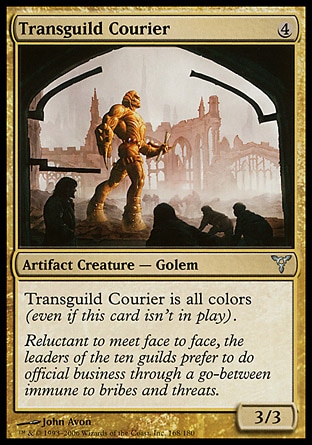
Transguild Courier is a creature with a characteristic defining abililty that states it is all 5 magic colours in every zone, however, there are no coloured mana symbols in its mana cost and therefore contributes nothing towards your devotion of any colour.
Some permanents don’t have a mana cost and will therefore not increase your devotion.
Lands do not have mana cost. It is obvious that the big mana symbols that replace the basic lands’ text box do not count for devotion.
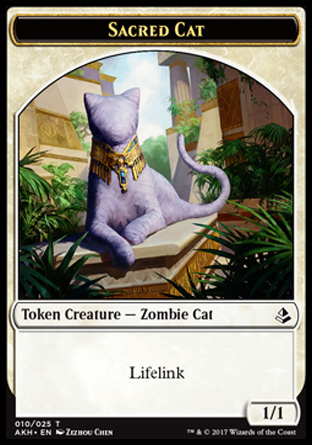
Tokens, like the ones created by Master of Waves’s triggered ability, do not have mana cost and do not affect your devotion.
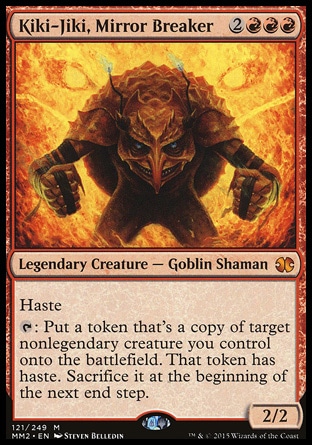
Tokens created by Kiki-Jiki, on the other hand, usually are the copies of creatures that actually have mana cost. These tokens will have the same mana cost as the creature they are copying.
Less obvious things happen if you play unusual cards.
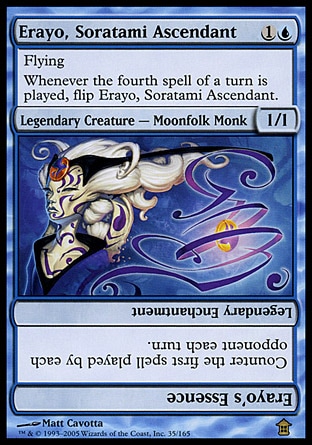
Erayo’s Essence has the same mana cost as Erayo, Soratami Ascendant – {1U}. Flipped or unflipped, as long as it is on the battlefield, it increases devotion to blue by one.
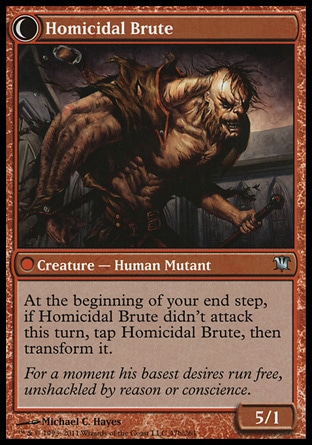
Homicidal Brute, the night side of Civilized Scholar, does not have mana cost, so its transformation back to Civilized Scholar increases your devotion to blue by one. Although Homicidal Brute is red, your devotion to red remains unaffected.
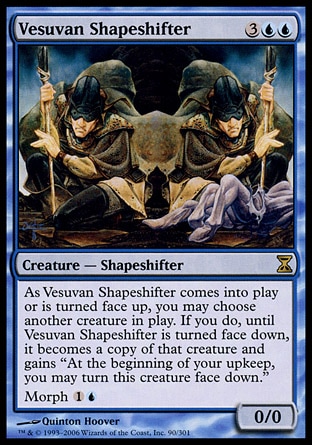
A face-down Vesuvan Shapeshifter has no mana cost. Be careful when you deal with his triggered ability, turning Shapeshifter face-down may cause some unexpected outcome.
So, the thing to remember about devotion is that it is a conditional static ability which affects the Theros Gods on the battlefield. When your devotion reaches the appropriate value (in Thassa’s case its 5) the Gods incarnate and become creatures while maintaining the card type Enchantment. If your devotion falls below the specified value they are just Enchantments. But how does the game handle devotion in the other zones? Well, devotion is not a characteristic defining ability so it will only function on the battlefield. In every other zone, the Gods of Theros are considered creature cards and enchantment cards.
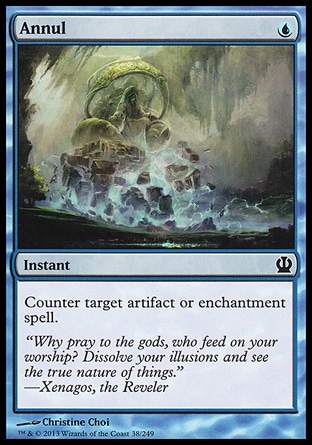
Thassa can always be countered with Anuul, because she is always an enchantment spell.

Thassa can’t be countered with Negate, because she is always a creature spell.
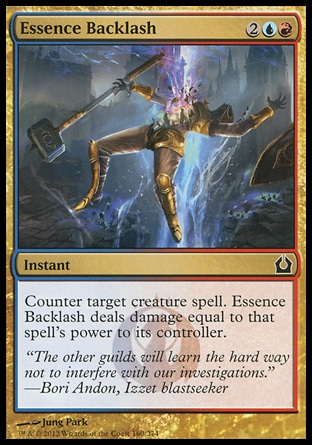
Regardless of your devotion to blue, Essence Backlash countering Thassa will also deal 5 damage to its controller.
Thassa, God of the Sea herself has one blue mana symbol in the mana cost, so if it’s on the battlefield under your control, your devotion to blue is at least one.
В зависимости от того, чему равна ваша Преданность синему, выход Тассы на поле битвы может привести к разным последствиям:
If Thassa enters the battlefield and isn’t a creature because your devotion isn’t 5, triggered abilities that check for a creature entering the battlefield will not trigger. However, abilities that check for an enchantment entering the battlefield, like Ajani’s Chosen, will trigger and bring home a kitten.
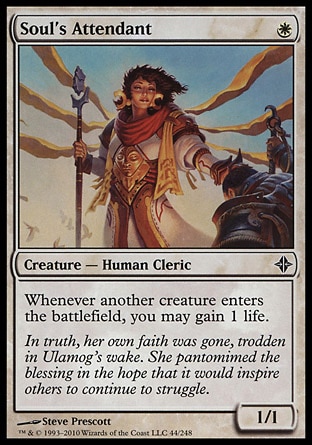
Imagine that your devotion to blue is 4 and Thassa is going to enter the battlefield.
Thassa enters the battlefield as a creature and all ability like “Whenever another creature enters the battlefield” (Soul’s Attendant) will trigger because they check if Thassa a creature when Thassa is already on the battlefield and is a careture due to increased devotion
If your cunning opponent controls Blind Obedience and you put Thassa on the battlefield, it enters untapped. Blind Obedience ability affects the permanents before they enter the battlefield. Thassa’s own ability only works on the battlefield, so until Thassa actually enters the battlefield, she is not a creature. You can’t to count Thassa herself for devotion because she isn’t on the battlefield yet and you can’ foresee that devotion will be equal 5 because devotion isn’t a characteristic: the game looks at the battlefield, counts devotion as 4 and provides an answer "Thassa isn’t a creature. It should be tapped".
If another Thassa enters the battlefield under your control, you’ll need to choose one and put it into the graveyard. This may cause your devotion to drop below 5 and the second Thassa immediately ceases to be a creature.
You may target Thassa, God of the Sea in the graveyard with Animate Dead. As soon as Thassa enters the battlefield your devotion to blue increases by one. If this is enough to incarnate Thassa, you’ll get a creature enchanted by Animate Dead.
If your devotion to blue is lower than 5, Animate Dead can’t legally enchant Thassa and goes to the graveyard the next time state-based actions are performed. Animated Dead’s ability then triggers and we have to sacrifice Thassa.
If a creature-Thassa is put into the graveyard from the battlefield, abilities that check for a creature leaving the battlefield will trigger, regardless of what happens after that. Thassa will be considered as a creature that died for Morbid.
If Thassa is not a creature, she has no power or toughness. She cannot be enchanted by Auras with enchant creature, she also can’t have Equipments attached to it.
Thassa stops being a creature as soon as your devotion to blue drops below five. The next time state-based actions are performed any Equipment or Auras with enchant creature become unattached. Auras then go to the graveyard and the Equipments remain on the battlefield. If Thassa had counters while she was a creature those counters (like +1/+1 counters) will not fall off if she becomes an Enchantment. They simply remain on Thassa but have no effect.
Sometimes Thassa may stop being a creature and reincarnate again before the SBA are performed. In this case Auras and Equipments will stay attached to her.
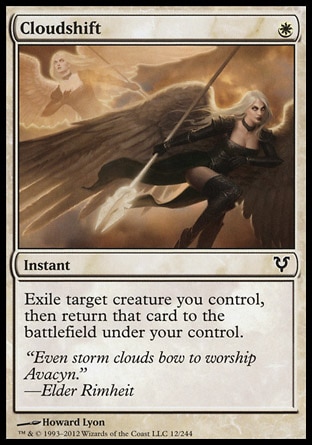
Let’s imagine that your devotion to blue is 6. You control Thassa, God of the Sea equipped with a Batterskull and Lord of Atlantis. Your cunning opponent wants to kill your Lord of Atlantis because if they do, they can drop your devotion to 4 which in turn makes Thassa an Enchantment and unequipes Batterskull (a 3 for 1 play). To save your Merfolk from death, you cast Cloudshift targeting him. When Cloudshift resolves, Lord of Atlantis is exiled, your devotion to blue drops to 4 and Thassa stops being a creature. However, Lord of Atlantis is then returned to the battlefield before state based actions are checked and your devotion to blue becomes 6 once again and Thassa incarnates. After Cloudshift has finished resolving, State Based Actions check and a confused Batterskull remains equippeed to your Thassa. So the thing to remember is that if your devotion to a colour falls below then rises back up to the threshold value, during the resolution of a spell or an ability, any Auras or Equipment remain attached to your God. As always, if your opponent questions this complex rules situation you should call a judge to your table.
If Thassa is an attacking or blocking creature and your Devotion to blue drops below 5, Thassa stops being a creature and is removed from combat. Please note that the creature she was blocking remains blocked. Furthermore, if Thassa becomes an enchantment and then re-incarnates during the resolution of an instant or an ability she is not removed from combat. However, once Thassa is removed from combat she cannot re-enter it even if she incarnates again before combat is completed.
If Thassa is a creature, you may assign her to attack or activate her abilities that have a tap or untap symbol in activation cost only if you controlled her continuously since the beginning of your last turn. It doesn’t matter for the summoning sickness if Thassa stops being a creature for a while or incarnates again. For the game it is only important that the object has been under control of the same player since the beginning of his or her last turn.
Thassa has no innate abilities that have a tap or untap symbol in the cost, but she can obtain some thanks to the effects such as Flame Fusillade.
Thassa’s third ability is a triggered ability. “At the beginning…” clause gives us a clue. This ability triggers as soon as your upkeep starts. If you happen to skip upkeep the ability never triggers. If you have two upkeep steps in the row (thanks to the Paradox Haze), the ability triggers twice per turn.
When the ability resolves you may scry 1.
Scry
Scry is a keyword action that means the following:
701.18a To “scry N” means to look at the top N cards of your library, put any number of them on the bottom of your library in any order, and put the rest on top of your library in any order.
For example, if you scry 3, you can look at the top 3 cards of your library, choose zero, one, two or three cards and put them on the bottom of the library in any order. The remaining cards (3, 2, 1, or none) are put on top of your library in any order. Simply put, scry allows you to set the order of cards that you find useful (so that you can draw them) or to send them to the bottom of your library in the hope that you will draw something better.
Thassa’s triggered ability allows you to scry 1, i.e. look at the top card of your library and either leave it there or put it on the bottom. Cool, isn’t it? Especially considering that Thassa’s ability resolves during your upkeep, right before you draw a card for the turn.

If you control Courser of Kruphix, you play with the top card of your library revealed.
While scrying N you don’t have to reveal all the cards you are looking at to your opponent, because technically the cards never leave the library and you have not changed the order until your scrying is complete. You only reveal the top card of your library after you are done with putting the cards on top.
Please bear in mind the following; according to CR 401.7, if you decide to leave the same card on the top of your library after scrying the card is considered a new object. I have never come across this rules interaction in my many years of judging, if you can think of a rules interaction where this is relevant please email us and let us know.
Thassa’s last ability is an activated one. You may activate it any time you have priority and as many times as you like as long as you pay its cost. This ability has a target and the target is chosen after the ability has been announced and before costs are paid. Please note that your target must be legal (in this case a creature you control), the usual rules of target legality apply.
If the ability resolves successfully, the targeted creature cannot be blocked this turn. This effect doesn’t grant a creature any abilities but rather it changes the rules of the game. This means that no matter how many times an opponent casts Turn (or any other spell removing abilities from a creature) targeting our creature it still cannot be blocked.
If the creature changes the controller unblockable effect will still affect the creature. However, in most cases this is irrelevant as whenever control of a creature changes it is immediately removed from combat. Being unblockable isn’t very valuable for a blocker.
So enjoy Thassa, God of the Sea art and a little background information in the official hitchhiker’s planeswalker’s guide to Theros.
- ⇑ Devotion is a very close relative to Chroma ability word.
- ⇑ However, its mana value is calculated using the mana cost of its front face.
- ⇑ This is not a state-based action. The game doesn’t need to wait in order to perform this action. It is performed immediately. In our situation right in the middle of Cloudshift resolving.
Translated by Witas Spasovski


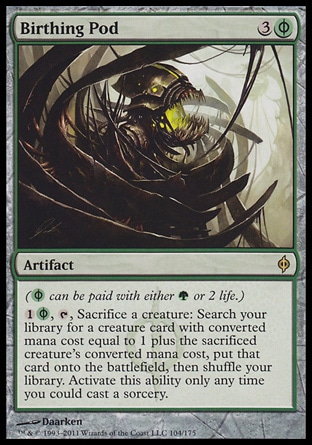
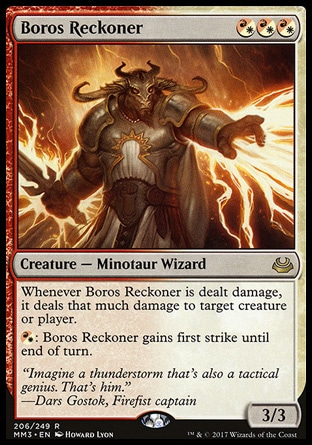

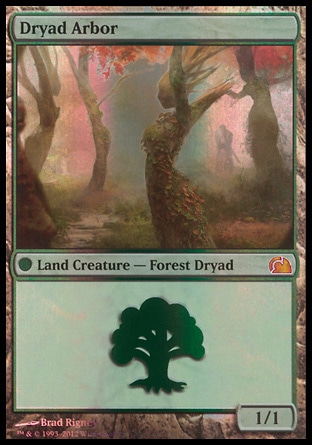

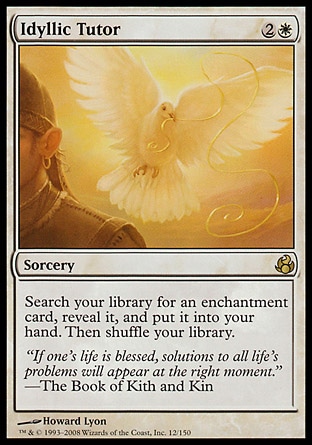

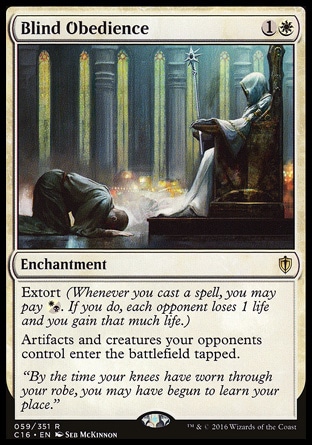
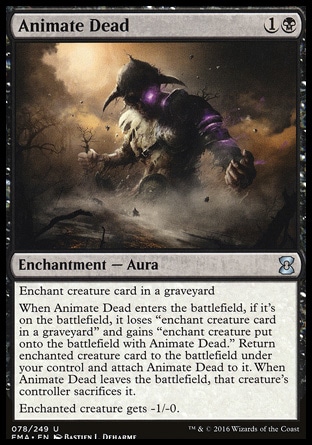
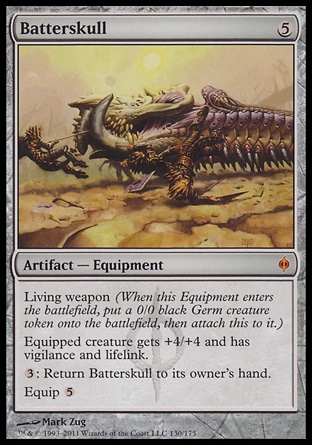
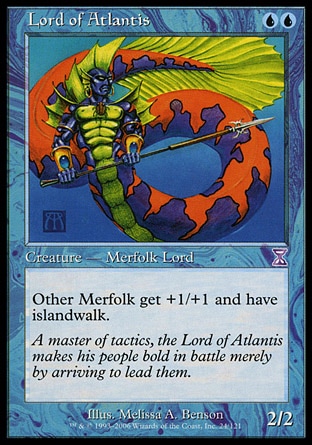
So, if you cast Chord of Calling you will be able to search and find Thassa (and any of the other Theros Gods) because in your library she is always a creature card.
The same principle applies with cards that search for and find Enchantments like our friend, Enlightened Tutor, because in your library Thassa is also an enchantment card.